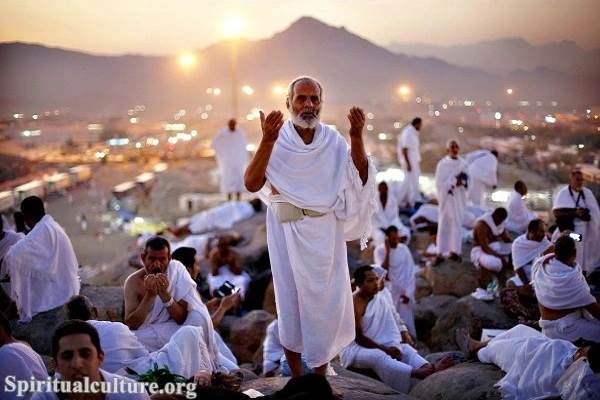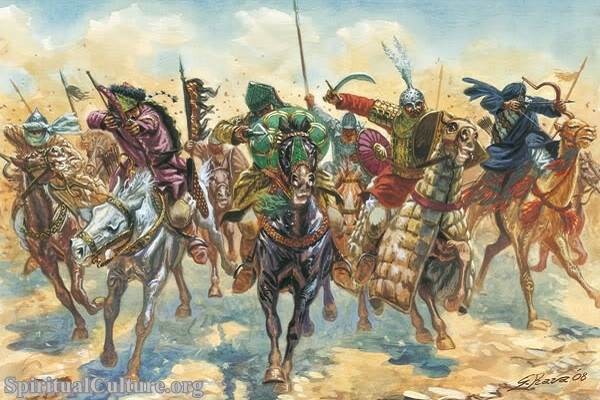The story of the Night Journey, known as Isra and Mi’raj, resonates deeply within the heart of Islamic tradition. It is a narrative not merely of miraculous travel but of profound spiritual ascent, symbolizing the soul’s yearning toward God, the unseen realms of existence, and the ultimate truth beyond the veils of this world.
As Spiritual Culture, we invite you to journey with us into this sacred event, exploring its meaning, its mysteries, and its enduring power to inspire believers across time and space. What does this journey tell us about divine love, human destiny, and the bridge between the earthly and the heavenly? Let us walk slowly and reverently through this story, allowing it to reveal its light within us.
The Story of Isra and Mi’raj: A Divine Invitation
The event of Isra and Mi’raj is narrated through the Quran and Hadith (sayings and traditions of the Prophet Muhammad, peace be upon him). It describes a two-part miraculous journey:
Isra: The Night Journey from Mecca to Jerusalem
“Glory be to Him who took His servant by night from the Sacred Mosque to the Farthest Mosque, whose surroundings We have blessed, to show him of Our signs. Indeed, He is the Hearing, the Seeing.” (Qur’an, 17:1)
Isra refers to the Prophet Muhammad’s journey from the Kaaba in Mecca to the Al-Aqsa Mosque in Jerusalem, traveling in a single night upon a wondrous steed known as Buraq. In Jerusalem, Muhammad led a congregation of earlier prophets in prayer, symbolizing the unity and continuity of divine guidance through the ages.
Mi’raj: The Heavenly Ascension
After Isra, the Mi’raj commenced: Muhammad ascended through the seven heavens, meeting prophets such as Adam, Moses, Jesus, and Abraham. He was ultimately brought into the Divine Presence, a reality so profound that even the angel Jibreel (Gabriel) could not accompany him beyond a certain point.
It was during this ascent that the command for the five daily prayers (Salat) was given to the Muslim community, a central pillar of Islamic worship and spiritual life.
The Spiritual Significance of the Night Journey
The Night Journey is rich with layered meanings, far beyond its miraculous nature. Each aspect of the story invites profound reflection.
The Journey as a Symbol of the Soul’s Ascent
The movement from Mecca to Jerusalem, and from Earth to the heavens, mirrors the inward journey every soul is called to make—a journey from attachment to the temporal, toward the eternal Reality.
In Islamic mysticism (Sufism), this event is seen as an archetype for spiritual ascent (mi’raj) that all sincere seekers undergo, moving from worldly awareness to the ultimate encounter with the Divine.
Jerusalem as a Sacred Bridge
Jerusalem, “the Farthest Mosque,” serves as a bridge between the earthly and heavenly realms. It reminds believers that the sacred is not confined to one space or nation but spans across history, uniting all prophets and peoples who seek God.
The prayer Muhammad led at Al-Aqsa symbolizes a profound truth: the unity of all prophetic messages in their purest form.
Prayer (Salat) as a Daily Ascension
The gift of the five daily prayers, received during Mi’raj, is not a burdensome command but a heavenly invitation. Every time a Muslim prays, it is a mini-ascension—a momentary lifting of the soul into divine nearness.
The Prophet Muhammad said, “The prayer is the ascension (mi’raj) of the believer.” (Hadith)
Thus, Salat becomes not merely a ritual but a rhythm of heavenly connection throughout the day.
Sacred Texts on Isra and Mi’raj
The Qur’an speaks directly of the Isra, as mentioned, but the Mi’raj is elaborated through Hadith literature. For instance:
- Sahih al-Bukhari narrates how the Prophet described ascending through the heavens and meeting earlier prophets, each offering him greetings and affirmations.
- Sahih Muslim recounts the bargaining over the number of daily prayers—from fifty initially prescribed, down to the five that Muslims observe today.
These sacred narratives not only recount historical events but breathe spiritual meaning into the daily lives of believers.
Metaphors and Lessons from the Night Journey
The Night Journey speaks in the language of the soul, rich in metaphor and mystery.
Light in the Darkness
That the journey occurred “by night” is no accident. Night, often symbolizing fear, uncertainty, and hiddenness, becomes the very canvas upon which divine light shines most brightly. God meets His servant in the unseen hours, turning darkness into a revelation.
Similarly, in our lives, the “night” of suffering, doubt, or struggle often becomes the hidden path to greater illumination.
Trusting the Invisible
For many contemporaries of Muhammad, the Night Journey was difficult to believe. Yet those with true faith, like Abu Bakr (later titled “As-Siddiq,” the Truthful), accepted it without hesitation.
Faith often demands a trust in realities unseen—a willingness to believe in the journey even when the road is hidden.
The Compassion of God
In the negotiation of prayer obligations—from fifty down to five—we see the compassion and mercy of God toward human limitations. Divine expectations are great, but so is divine understanding.
Connection to Inner Struggles and Modern Life
The Night Journey resonates beyond its historical moment. Today, in a world of fragmentation, uncertainty, and disconnection, its lessons offer balm and guidance.
The Human Need for Ascent
We are all travelers. Beneath every ambition, every love, every yearning is a deeper hunger—to ascend, to connect with something larger than ourselves.
The Night Journey reminds us that true fulfillment lies not in more possessions or accolades, but in drawing near to the Source of all being.
Facing Modern “Nights”
In times of despair, the Night Journey reassures us: the darkest hours often precede the greatest revelations. As God brought His Prophet through night into divine encounter, so too can our own nights be passages to hidden blessings.
Building Bridges Across Divides
The Prophet’s leadership of prior prophets in prayer at Al-Aqsa calls modern believers to unity across divisions. In a fractured world, the Night Journey whispers of a deeper oneness under God’s gaze.
Reflect and Reimagine
The story of Isra and Mi’raj is not locked in the past. It is an ever-living mirror, reflecting back to us our own need for ascent, trust, and divine intimacy.
As we move through the nights of our own lives—whether nights of loneliness, confusion, ambition, or yearning—may we remember:
- There is a divine hand guiding the unseen road.
- Prayer is our daily bridge between earth and heaven.
- Faith often asks us to walk beyond what sight alone can show.
“Indeed, with hardship comes ease.” (Qur’an, 94:6)
May we, like the Prophet, find in our journeys—both outer and inner—the touch of the Eternal.
With reverence and wonder,
Spiritual Culture




